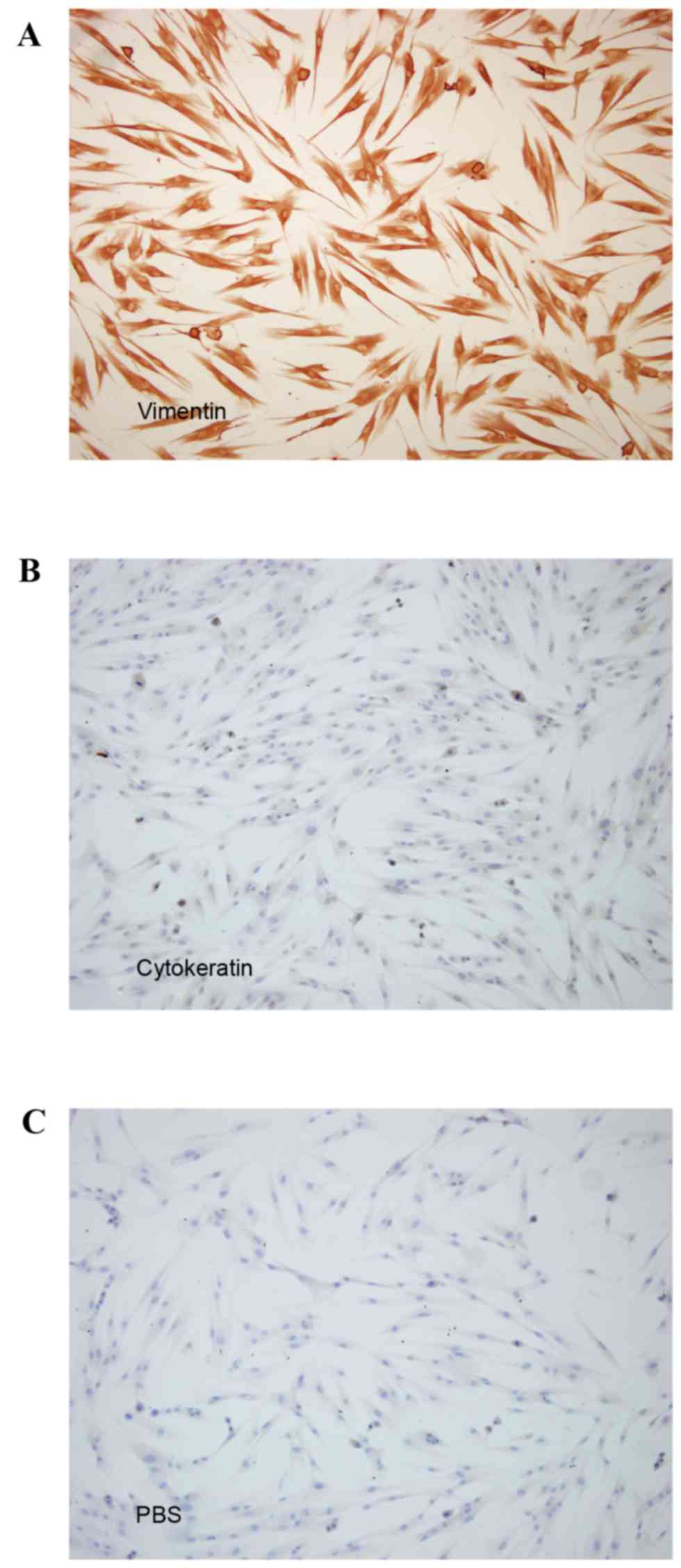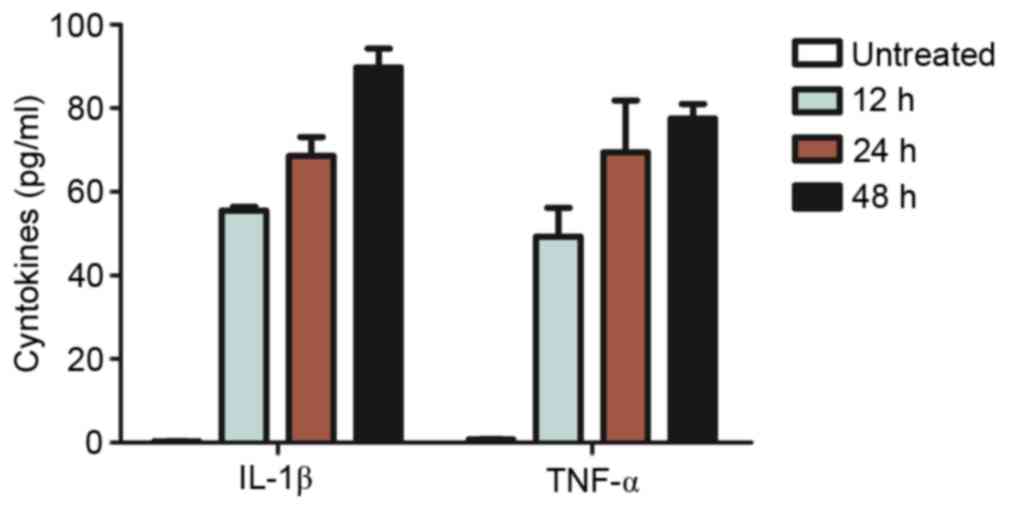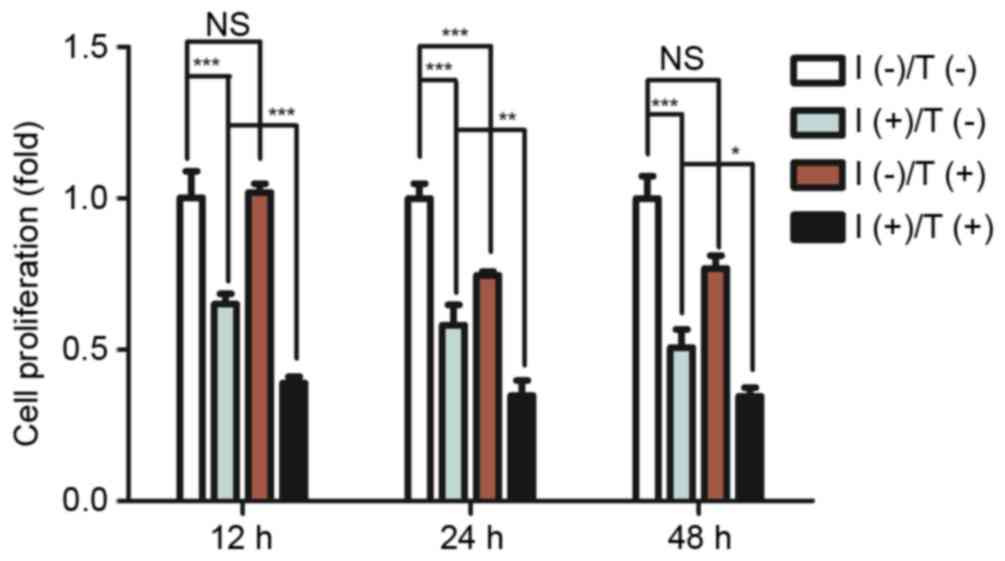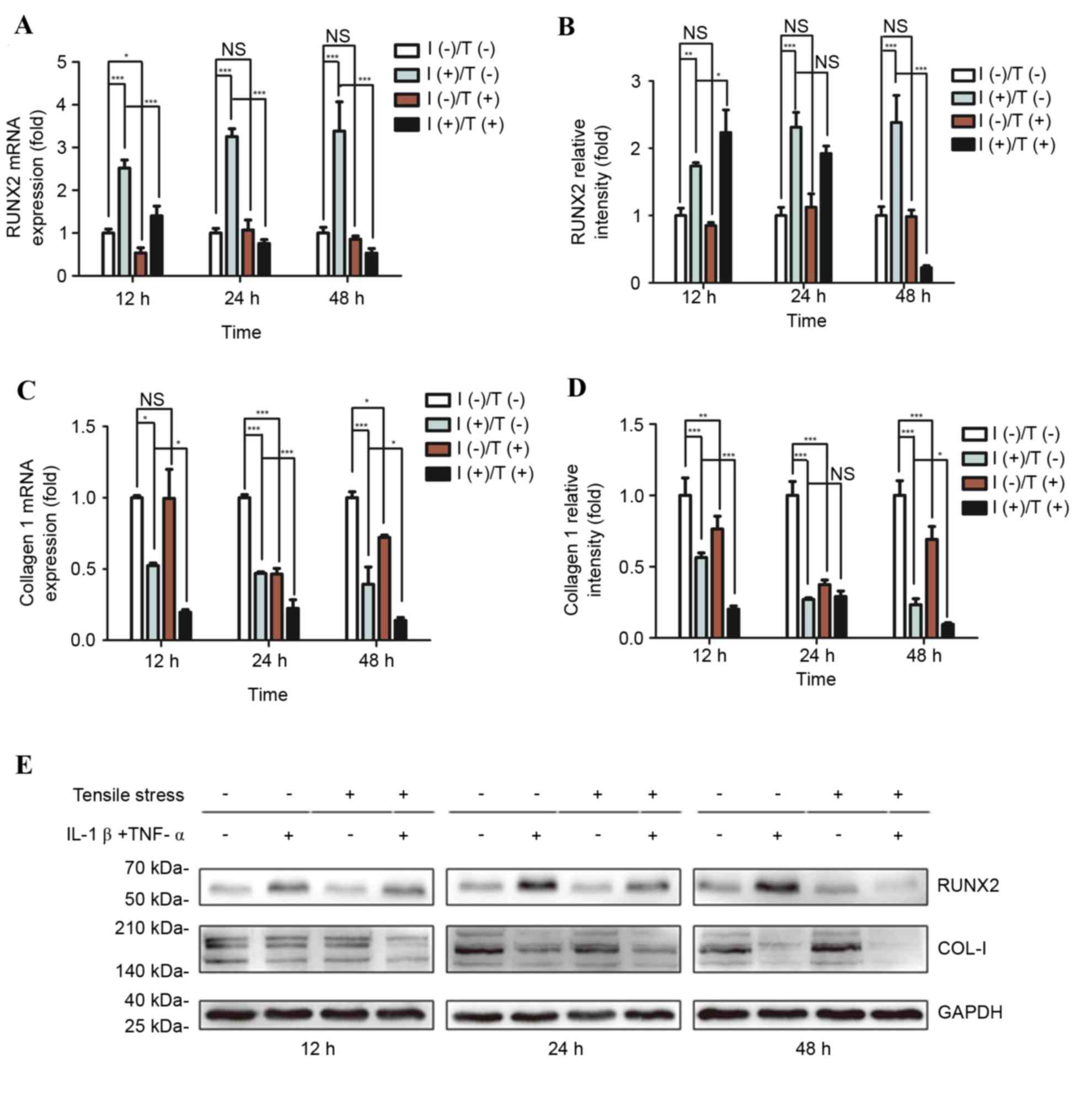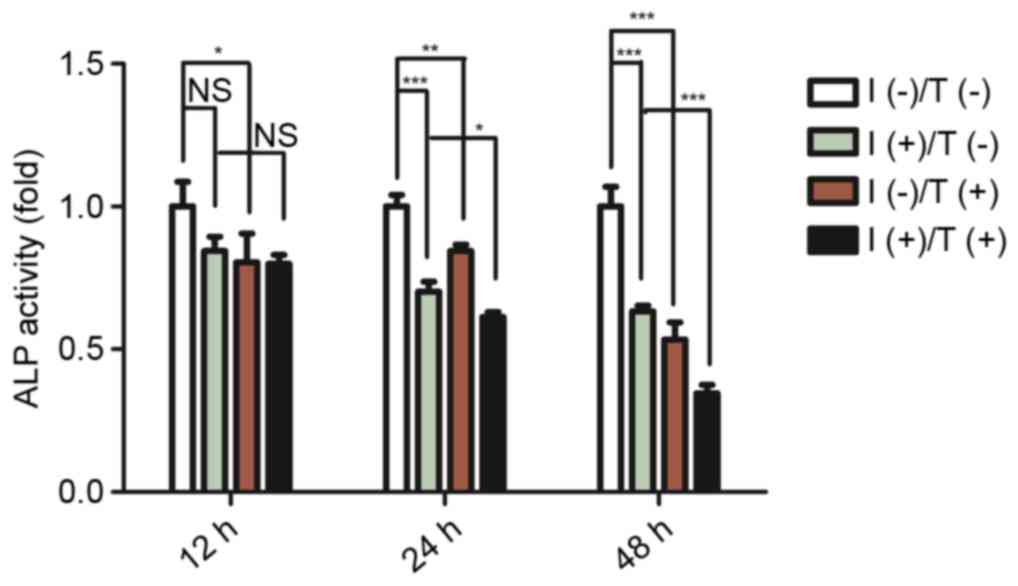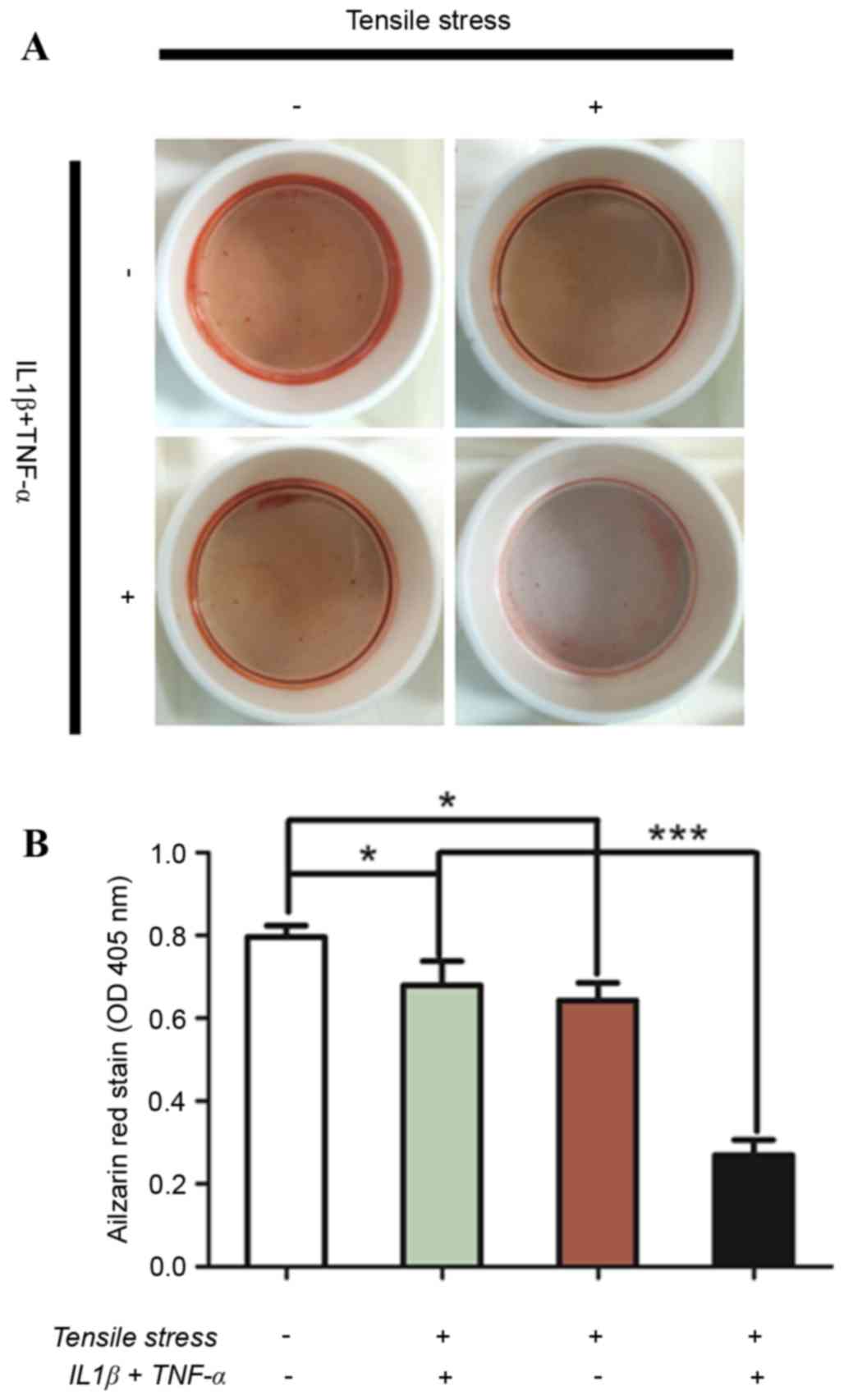|
1
|
Ivanovski S, Gronthos S, Shi S and Bartold
PM: Stem cells in the periodontal ligament. Oral Dis. 12:358–363.
2006. View Article : Google Scholar : PubMed/NCBI
|
|
2
|
Agarwal S, Long P, Seyedain A, Piesco N,
Shree A and Gassner R: A central role for the nuclear factor-kappaB
pathway in anti-inflammatory and proinflammatory actions of
mechanical strain. FASEB J. 17:899–901. 2003.PubMed/NCBI
|
|
3
|
Liu M, Dai J, Lin Y, Yang L, Dong H, Li Y,
Ding Y and Duan Y: Effect of the cyclic stretch on the expression
of osteogenesis genes in human periodontal ligament cells. Gene.
491:187–193. 2012. View Article : Google Scholar : PubMed/NCBI
|
|
4
|
Lee YH, Nahm DS, Jung YK, Choi JY and Kim
SG, Cho M, Kim MH, Chae CH and Kim SG: Differential gene expression
of periodontal ligament cells after loading of static compressive
force. J Periodontol. 78:446–452. 2007. View Article : Google Scholar : PubMed/NCBI
|
|
5
|
Nakao K, Goto T, Gunjigake KK, Konoo T,
Kobayashi S and Yamaguchi K: Intermittent force induces high RANKL
expression in human periodontal ligament cells. J Dent Res.
86:623–628. 2007. View Article : Google Scholar : PubMed/NCBI
|
|
6
|
Li J, Jiang L, Liao G, Chen G, Liu Y, Wang
J, Zheng Y, Luo S and Zhao Z: Centrifugal forces within
usually-used magnitude elicited a transitory and reversible change
in proliferation and gene expression of osteoblastic cells UMR-106.
Mol Biol Rep. 36:299–305. 2009. View Article : Google Scholar : PubMed/NCBI
|
|
7
|
Yang YQ, Li XT, Rabie AB, Fu MK and Zhang
D: Human periodontal ligament cells express osteoblastic phenotypes
under intermittent force loading in vitro. Front Biosci.
11:776–781. 2006. View
Article : Google Scholar : PubMed/NCBI
|
|
8
|
Okada H and Murakami S: Cytokine
expression in periodontal health and disease. Crit Rev Oral Biol
Med. 9:248–266. 1998. View Article : Google Scholar : PubMed/NCBI
|
|
9
|
Gamonal J, Acevedo A, Bascones A, Jorge O
and Silva A: Levels of interleukin-1 beta, -8 and -10 and RANTES in
gingival crevicular fluid and cell populations in adult
periodontitis patients and the effect of periodontal treatment. J
Periodontol. 71:1535–1545. 2000. View Article : Google Scholar : PubMed/NCBI
|
|
10
|
Delima AJ, Oates T, Assuma R, Schwartz Z,
Cochran D, Amar S and Graves DT: Soluble antagonists to
interleukin-1 (IL-1) and tumor necrosis factor (TNF) inhibits loss
of tissue attachment in experimental periodontitis. J Clin
Periodontol. 28:233–240. 2001. View Article : Google Scholar : PubMed/NCBI
|
|
11
|
Graves DT and Cochran D: The contribution
of interleukin-1 and tumor necrosis factor to periodontal tissue
destruction. J Periodontol. 74:391–401. 2003. View Article : Google Scholar : PubMed/NCBI
|
|
12
|
Górska R, Gregorek H, Kowalski J,
Laskus-Perendyk A, Syczewska M and Madalinski K: Relationship
between clinical parameters and cytokine profiles in inflamed
gingival tissue and serum samples from patients with chronic
periodontitis. J Clin Periodontol. 30:1046–1052. 2003. View Article : Google Scholar : PubMed/NCBI
|
|
13
|
Liu N, Shi S, Deng M, Tang L, Zhang G, Liu
N, Ding B, Liu W, Liu Y, Shi H, et al: High levels of β-catenin
signaling reduce osteogenic differentiation of stem cells in
inflammatory microenvironments through inhibition of the
noncanonical Wnt pathway. J Bone Miner Res. 26:2082–2095. 2011.
View Article : Google Scholar : PubMed/NCBI
|
|
14
|
Kim YS, Pi SH, Lee YM, Lee SI and Kim EC:
The anti-inflammatory role of heme oxygenase-1 in
lipopolysaccharide and cytokine-stimulated inducible nitric oxide
synthase and nitric oxide production in human periodontal ligament
cells. J Periodontol. 80:2045–2055. 2009. View Article : Google Scholar : PubMed/NCBI
|
|
15
|
Yang H, Gao LN, An Y, Hu CH, Jin F, Zhou
J, Jin Y and Chen FM: Comparison of mesenchymal stem cells derived
from gingival tissue and periodontal ligament in different
incubation conditions. Biomaterials. 34:7033–7047. 2013. View Article : Google Scholar : PubMed/NCBI
|
|
16
|
Omar OM, Granéli C, Ekström K, Karlsson C,
Johansson A, Lausmaa J, Wexell CL and Thomsen P: The stimulation of
an osteogenic response by classical monocyte activation.
Biomaterials. 32:8190–8204. 2011. View Article : Google Scholar : PubMed/NCBI
|
|
17
|
Ekström K, Omar O, Granéli C, Wang X,
Vazirisani F and Thomsen P: Monocyte exosomes stimulate the
osteogenic gene expression of mesenchymal stem cells. PLoS One.
8:e752272013. View Article : Google Scholar : PubMed/NCBI
|
|
18
|
Rossa C Jr, Liu M, Patil C and Kirkwood
KL: MKK3/6-p38 MAPK negatively regulates murine MMP-13 gene
expression induced by IL-1beta and TNF-alpha in immortalized
periodontal ligament fibroblasts. Matrix Biol. 24:478–488. 2005.
View Article : Google Scholar : PubMed/NCBI
|
|
19
|
Wang Y, Tang Z, Xue R, Singh GK, Shi K, Lv
Y and Yang L: Combined effects of TNF-α, IL-1β and HIF-1α on MMP-2
production in ACL fibroblasts under mechanical stretch: An in vitro
study. J Orthop Res. 29:1008–1014. 2011. View Article : Google Scholar : PubMed/NCBI
|
|
20
|
Tsuji K, Uno K, Zhang GX and Tamura M:
Periodontal ligament cells under intermittent tensile stress
regulate mRNA expression of osteoprotegerin and tissue inhibitor of
matrix metalloprotease-1 and -2. J Bone Miner Metab. 22:94–103.
2004. View Article : Google Scholar : PubMed/NCBI
|
|
21
|
Kusano K, Miyaura C, Inada M, Tamura T,
Ito A, Nagase H, Kamoi K and Suda T: Regulation of matrix
metalloproteinases (MMP-2, -3, -9 and -13) by interleukin-1 and
interleukin-6 in mouse calvaria: Association of MMP induction with
bone resorption. Endocrinology. 139:1338–1345. 1998. View Article : Google Scholar : PubMed/NCBI
|
|
22
|
Ma J, Kitti U, Teronen O, Sorsa T, Husa V,
Laine P, Rönkä H, Salo T, Lindqvist C and Konttinen YT:
Collagenases in different categories of peri-implant vertical bone
loss. J Dent Res. 79:1870–1873. 2000. View Article : Google Scholar : PubMed/NCBI
|
|
23
|
Lian JB and Stein GS: Runx2/Cbfa1: A
multifunctional regulator of bone formation. Curr Pharm Des.
9:2677–2685. 2003. View Article : Google Scholar : PubMed/NCBI
|
|
24
|
Matsuda N, Yokoyama K, Takeshita S and
Watanabe M: Role of epidermal growth factor and its receptor in
mechanical stress-induced differentiation of human periodontal
ligament cells in vitro. Arch Oral Biol. 43:987–997. 1998.
View Article : Google Scholar : PubMed/NCBI
|
|
25
|
Kawarizadeh A, Bourauel C, Götz W and
Jäger A: Early responses of periodontal ligament cells to
mechanical stimulus in vivo. J Dent Res. 84:902–906. 2005.
View Article : Google Scholar : PubMed/NCBI
|
|
26
|
Chen B, Sun HH, Wang HG, Kong H, Chen FM
and Yu Q: The effects of human platelet lysate on dental pulp stem
cells derived from impacted human third molars. Biomaterials.
33:5023–5035. 2012. View Article : Google Scholar : PubMed/NCBI
|
|
27
|
Wescott DC, Pinkerton MN, Gaffey BJ, Beggs
KT, Milne TJ and Meikle MC: Osteogenic gene expression by human
periodontal ligament cells under cyclic tension. J Dent Res.
86:1212–1216. 2007. View Article : Google Scholar : PubMed/NCBI
|
|
28
|
Han LM, Li S, Wang L and Xu Y: Cyclic
tensile stress during physiological occlusal force enhances
osteogenic differentiation of human periodontal ligament cells via
ERK1/2-Elk1 MAPK pathway. DNA Cell Biol. 32:488–497. 2013.
View Article : Google Scholar : PubMed/NCBI
|
|
29
|
Natali AN, Pavan PG and Scarpa C:
Numerical analysis of tooth mobility: Formulation of a non-linear
constitutive law for the periodontal ligament. Dent Mater.
20:623–629. 2004. View Article : Google Scholar : PubMed/NCBI
|
|
30
|
Yeh Y, Yang Y and Yuan K: Importance of
CD44 in the proliferation and mineralization of periodontal
ligament cells. J Periodontal Res. 49:827–835. 2014. View Article : Google Scholar : PubMed/NCBI
|
|
31
|
Pabari S, Moles DR and Cunningham SJ:
Assessment of motivation and psychological characteristics of adult
orthodontic patients. Am J Orthod Dentofacial Orthop.
140:e263–e272. 2011. View Article : Google Scholar : PubMed/NCBI
|
|
32
|
Hajishengallis G: Aging and its impact on
innate immunity and inflammation: Implications for periodontitis. J
Oral Biosci. 56:30–37. 2014. View Article : Google Scholar : PubMed/NCBI
|
|
33
|
Eke PI, Dye BA, Wei L, Thornton-Evans GO
and Genco RJ: CDC Periodontal Disease Surveillance workgroup: James
Beck (University of North Carolina, Chapel Hill, USA), Gordon
Douglass (Past President, American Academy of Periodontology), Roy
Page (University of Washin): Prevalence of periodontitis in adults
in the United States: 2009 and 2010. J Dent Res. 91:914–920. 2012.
View Article : Google Scholar : PubMed/NCBI
|
|
34
|
Wang Y, Wang H, Ye Q, Ye J, Xu C, Lin L,
Deng H and Hu R: Co-regulation of LPS and tensile strain
downregulating osteogenicity via c-fos expression. Life Sci.
93:38–43. 2013. View Article : Google Scholar : PubMed/NCBI
|
|
35
|
Yamaguchi M, Shimizu N, Shibata Y and
Abiko Y: Effects of different magnitudes of tension-force on
alkaline phosphatase activity in periodontal ligament cells. J Dent
Res. 75:889–894. 1996. View Article : Google Scholar : PubMed/NCBI
|
|
36
|
Long P, Hu J, Piesco N, Buckley M and
Agarwal S: Low magnitude of tensile strain inhibits
IL-1beta-dependent induction of pro-inflammatory cytokines and
induces synthesis of IL-10 in human periodontal ligament cells in
vitro. J Dent Res. 80:1416–1420. 2001. View Article : Google Scholar : PubMed/NCBI
|
|
37
|
Baba S, Kuroda N, Arai C, Nakamura Y and
Sato T: Immunocompetent cells and cytokine expression in the rat
periodontal ligament at the initial stage of orthodontic tooth
movement. Arch Oral Biol. 56:466–473. 2011. View Article : Google Scholar : PubMed/NCBI
|
|
38
|
Bletsa A, Berggreen E and Brudvik P:
Interleukin-1alpha and tumor necrosis factor-alpha expression
during the early phases of orthodontic tooth movement in rats. Eur
J Oral Sci. 114:423–429. 2006. View Article : Google Scholar : PubMed/NCBI
|
|
39
|
Nokhbehsaim M, Deschner B, Winter J,
Reimann S, Bourauel C, Jepsen S, Jäger A and Deschner J:
Contribution of orthodontic load to inflammation-mediated
periodontal destruction. J Orofac Orthop. 71:390–402. 2010.
View Article : Google Scholar : PubMed/NCBI
|
|
40
|
Rifas L: T-cell cytokine induction of
BMP-2 regulates human mesenchymal stromal cell differentiation and
mineralization. J Cell Biochem. 98:706–714. 2006. View Article : Google Scholar : PubMed/NCBI
|
|
41
|
Rifas L, Arackal S and Weitzmann MN:
Inflammatory T cells rapidly induce differentiation of human bone
marrow stromal cells into mature osteoblasts. J Cell Biochem.
88:650–659. 2003. View Article : Google Scholar : PubMed/NCBI
|
|
42
|
Nemoto T, Kajiya H, Tsuzuki T, Takahashi Y
and Okabe K: Differential induction of collagens by mechanical
stress in human periodontal ligament cells. Arch Oral Biol.
55:981–987. 2010. View Article : Google Scholar : PubMed/NCBI
|
|
43
|
Ding J, Ghali O, Lencel P, Broux O,
Chauveau C, Devedjian JC, Hardouin P and Magne D: TNF-alpha and
IL-1beta inhibit RUNX2 and collagen expression but increase
alkaline phosphatase activity and mineralization in human
mesenchymal stem cells. Life Sci. 84:499–504. 2009. View Article : Google Scholar : PubMed/NCBI
|
|
44
|
Zhang P, Wu Y, Jiang Z, Jiang L and Fang
B: Osteogenic response of mesenchymal stem cells to continuous
mechanical strain is dependent on ERK1/2-Runx2 signaling. Int J Mol
Med. 29:1083–1089. 2012.PubMed/NCBI
|



